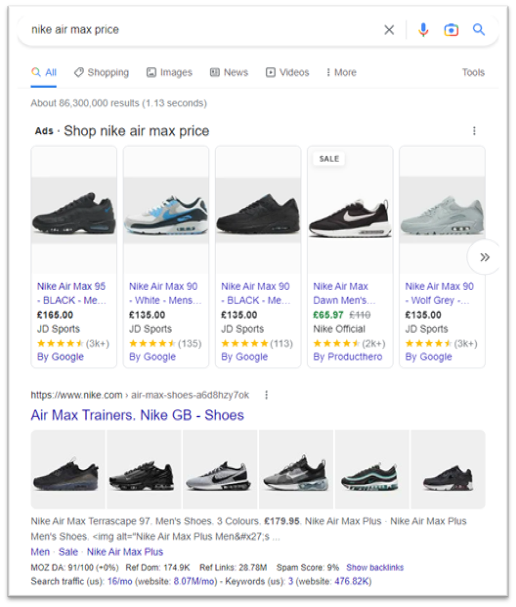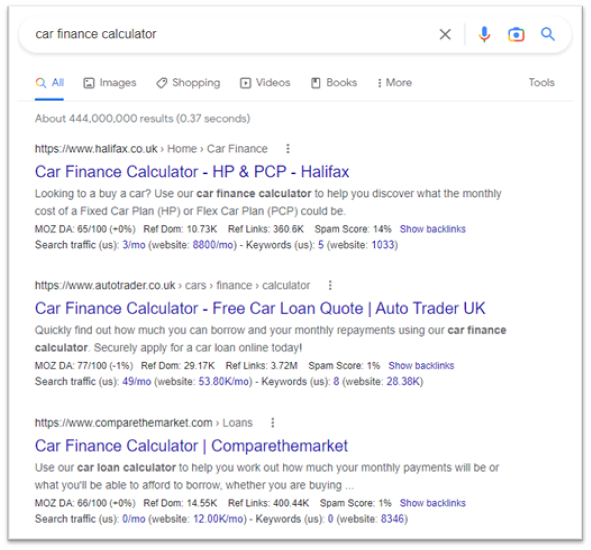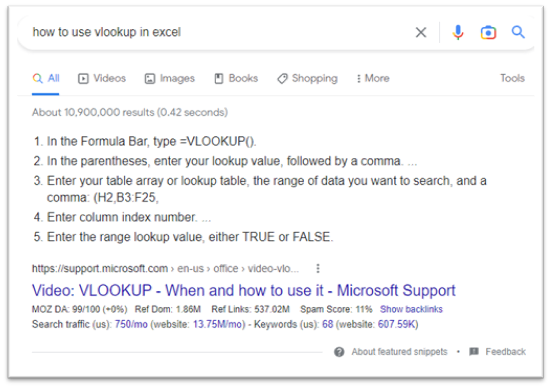Everything you need to know about search intent
Search intent – sometimes referred to as user intent or keyword intent – is the term used to describe the reason why a user is searching for a particular query.
Your target users will be searching using a wide variety of search terms, for a wide variety of reasons and understanding why users are searching for something will help you deliver the answer they’re looking for.
For the most in-depth analysis of search intent you should read Google’s latest edition of its Search Quality Evaluator Guidelines – but it’s 176 pages long…
So, if you just want to read this blog post instead, we’ll understand.
Why should I care about search intent?
Google’s ultimate goal is to serve results that give a satisfactory answer to a user’s search query. It’s far too easy to forget this when you’re focusing on targeting keywords with high volumes – but remember that search volume tells half the story.
You need to ensure your content and landing pages aligns with search intent too.
Having a clearer understanding of search intent can help:
- Create an effective content strategy – targeting keywords that are relevant to your target audience.
- Optimise pages – understanding how to structure and optimise pages to meet a user’s needs.
- Create relevant content – understanding a user’s needs and create content that fulfils them.
- Rank higher in search results – demonstrating to search engines that you are providing valuable and relevant information.
The 4 types of search intent
A good way to think of search intent is that it applies to the different stages of the buyer’s journey, but ultimately there are only 4 main categories:
1. Transactional
2. Commercial
3. Informational
4. Navigational
However, you may sometimes find that queries will have mixed intent that fits into two or more of these categories, for example some search terms will have a commercial and informational intent such as the search “travel cot”.
While leaning primarily towards commercial, there is some informational intent behind this search term too and so Google will throw in some valuable informational pages alongside the commercially focused pages. This is fairly typical with terms relating to baby items as Google views them as a ‘your money or your life’ query.

Transactional intent
Transactional search queries are from users who are looking to carry out specific actions – usually making a purchase.
Users might do some shopping around for a specific product or service before committing, but they’re generally looking to make a purchase within this search session.
Some good examples of transactional intent might be:
“Nike Air Max Price”
“SEM Rush trial”
“Disney Plus Subscription”
“Fancy dress outfit”

Commercial intent
This type of search intent is for queries where the user is looking to research or shop around before committing to a purchase.
Commercial intent will often have strong overlap between both transactional and informational intent with users looking for knowledge to help inform a possible future purchase.
This is especially true for larger financial commitments or ‘your money or your life’ topics.
Some examples of commercial intent might be:
“Samsung vs iPhone”
“Car finance calculator”
“SEM Rush alternatives”

Informational intent
Unsurprisingly, terms with informational intent tend to mean the user is looking to learn something. They might not know exactly what they are looking for yet but will use these kinds of search terms to guide their search.
These queries are often framed as questions and use words like “who”, “where”, “when” and “how”.
Users with this kind of intent are generally at the beginning stage of their buying journey and still researching, so although they are less likely to convert these queries can still be valuable.
Some examples of informational intent might be:
“How to unclog a sink”
“How does car finance work?”
“How to use vlookup in Excel?”
“When is the next lunar eclipse?”

Navigational intent
This type of intent is when a user wants to find a specific page or website.
Unlike other categories of intent, with these queries users generally know exactly where they’re trying to navigate to. This means that navigational terms tend to be more brand focused and with very specific keywords.
Some examples of navigational intent might be:
“Dominoes”
“Cazoo car finance”
“Multivitamins Holland and Barrett”
How can you tell search intent?
So, now we know the different types of search intent, how can you tell the intent behind a query?
Well, there are a few different ways. Your first port of call should be typing in the search query yourself and seeing what comes up. Look at if there are more product pages and the shopping banner, or is there the “People also asked” section and blog posts?
There are also tools that you can use which assign search intent to various keywords, such as SEM Rush or AWR Cloud, but always take these with a pinch of salt.
Why is this important?
Understanding the search intent behind a query and how your competitors are satisfying intent can help inform your strategies on ranking for that term.
Look at the page you’re using to target that search term, does it match up with the other pages that are ranking for that term?
For example, if the SERP shows the keyword has commercial intent and is showing product category pages, does your page have the features that a user would expect to see? Things like product filters, or content that provides valuable information on the product? Relevant structured data or user reviews such as TrustPilot? These can help ensure you’re satisfying the commercial intent behind that query.
You can also note what is missing from the SERPs that might help your page stand out, like an FAQ section.
Understanding the intent can also help to inform on the content you’re writing for category pages and blogs.
Whether it’s for commercial or informational terms, look at the SERPs to find out what content is being covered that satisfies the search intent of the term.
You might find direct questions to the search term you’re targeting and related queries that are relevant to the user, taking the form of People Also Ask, featured snippets, etc.
Google is smart enough to know that these questions are related, so naturally incorporating them into your content can show search engines that your content is relevant and valuable to users.
So, by investigating what it is that people are searching for and tailoring your content in response you will be answering their questions (bringing in new customers) and demonstrating to search engines that your content is valuable (helping you to rank higher).
If you want some more help with understanding search intent and how it can inform your SEO strategy, make sure to get in contact.
Latest Insights From The Team.
Explore our team’s latest thoughts and actionable advice from our blog to support your digital marketing strategies.